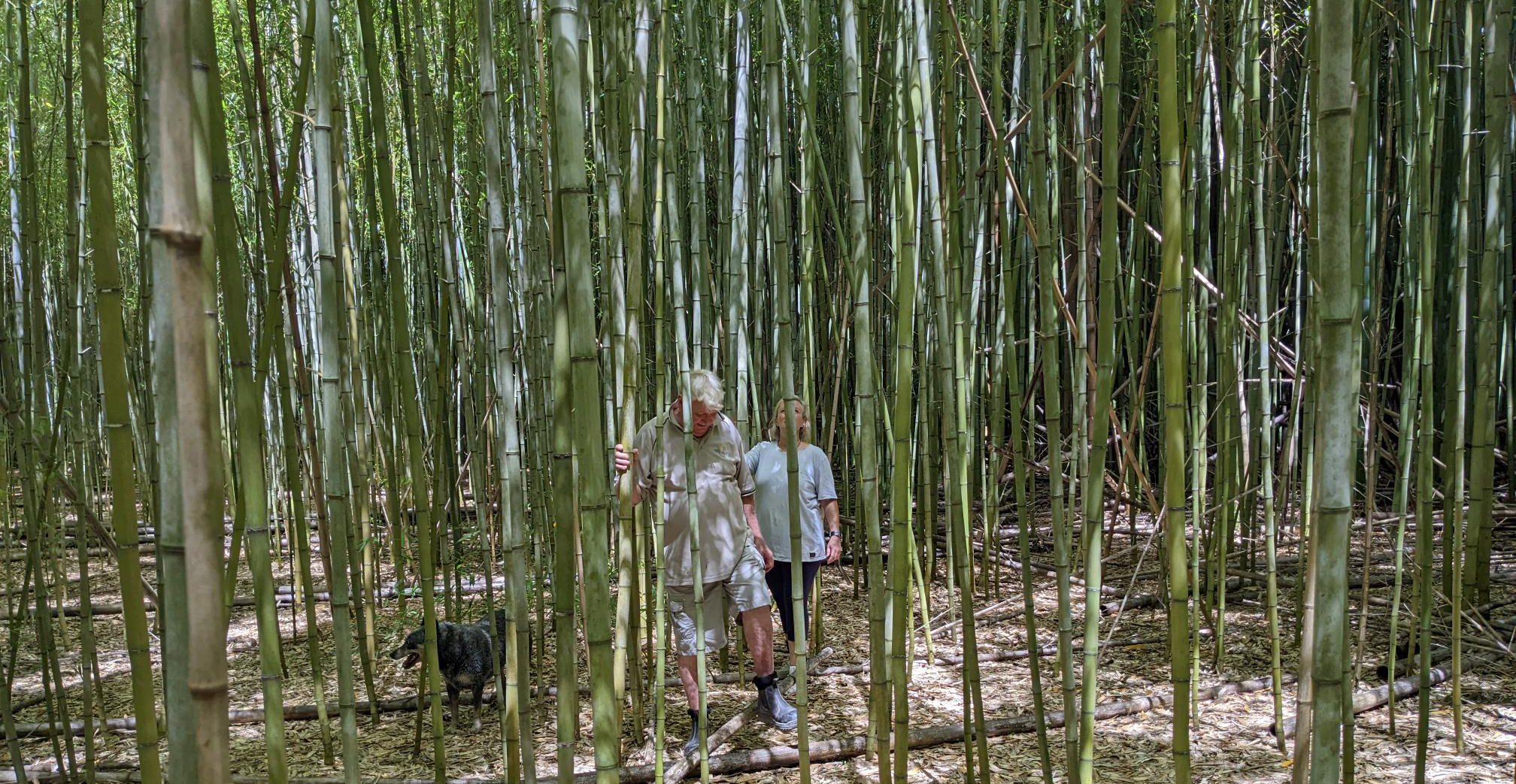Native Bamboo? In Australia? What?
Dispelling Misconceptions about Bamboo
Bamboo, often misunderstood as a weed, is actually a type of grass with over 1,500 species found across the globe. It is a versatile and valuable plant that can thrive in various environments. While some species can become invasive, proper management ensures bamboo can provide numerous practical and environmental benefits. Different growth patterns exist in bamboo species, such as running bamboo (Moso Bamboo) and clumping bamboo, each with their unique characteristics and advantages.
Native Bamboo Species in Australia
Contrary to popular belief, Australia is home to three native bamboo species:
- Bambusa arnhemica
- Mullerochloa moreheadiana
- Neololeba atra
Bambusa Arnhemica: This species is a clumping bamboo that grows in the tropical savannah woodlands of northern Australia. It is known for its challenging growth characteristics, including low branches that make harvesting fresh shoots difficult, and entangled, rarely straight poles. Despite these challenges, the species thrives in its natural habitat, where it coexists with local wildlife and is used by local Indigenous communities for various purposes, including construction and crafts.



Mullerochloa Moreheadiana: Found in the northern regions of Australia, this species is a small clumping bamboo that grows in wet, swampy areas. It is not widely used but has the potential for ornamental and land rehabilitation purposes.
Mullerochloa Moreheadiana is a relatively lesser-known bamboo species that has recently gained attention within the bamboo research community. It is believed that this species has been left undocumented by Dieter Ohrnberger, the author of “The Bamboos of the World,” a comprehensive reference for species recognition. The name Mullerochloa Moreheadiana pays tribute to the Australian bamboo botanist Len Muller, who conducted extensive research on local bamboo species.
Len Muller, who was once based at Russell River and later in Cairns, made significant contributions to the understanding and documentation of Australian bamboo species. As a result, the discovery and recognition of Mullerochloa Moreheadiana serve as a testament to his work in the field.
Though much remains to be explored about this newly discovered bamboo species, its very existence adds to the rich diversity of bamboo found across the world and highlights the importance of ongoing research in uncovering hidden treasures in the world of flora.


Neololeba Atra: This clumping bamboo species is native to the rainforests of northeastern Australia. It grows in lowland and upland areas and is known for its attractive, dark culms. Neololeba atra has potential for ornamental uses and as a source of material for crafts.
Neololeba Atra, formerly known as Bambusa forbesii or “Iron Range Bamboo,” is a unique bamboo species native to the Iron Range region of Australia. This name change reflects a better understanding of the species’ taxonomy and botanical characteristics, thanks to ongoing research in the field of bamboo studies.



Harnessing Bamboo’s Potential in Australia
Australia’s diverse climate and landscapes provide ideal conditions for growing various bamboo species. By connecting bamboo to the existing timber industry, facilities producing Cross Laminated Timber can also process bamboo to create Cross Laminated Bamboo and Glulam with minimal modifications.
The 2019-2020 bushfires severely impacted Australia’s timber supply. Bamboo can serve as a sustainable alternative to alleviate deforestation and meet domestic demand. To overcome government regulations and misconceptions, it is essential to educate and communicate the benefits of bamboo, highlighting its potential as a sustainable resource.




Bamboo and the Circular Economy
A circular bamboo economy can regenerate Australia’s land and combat climate change. By fostering collaboration and knowledge-sharing, bamboo can become an integral part of land rehabilitation, especially in mining areas. This versatile plant can offer innovative opportunities for Australia, paving the way for a sustainable future.
In conclusion, Australia has enormous potential to create a thriving bamboo industry. By dispelling misconceptions and harnessing the power of native and non-native species, the country can develop a sustainable circular economy that benefits both the environment and its people.
